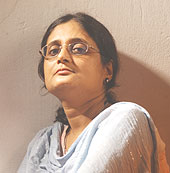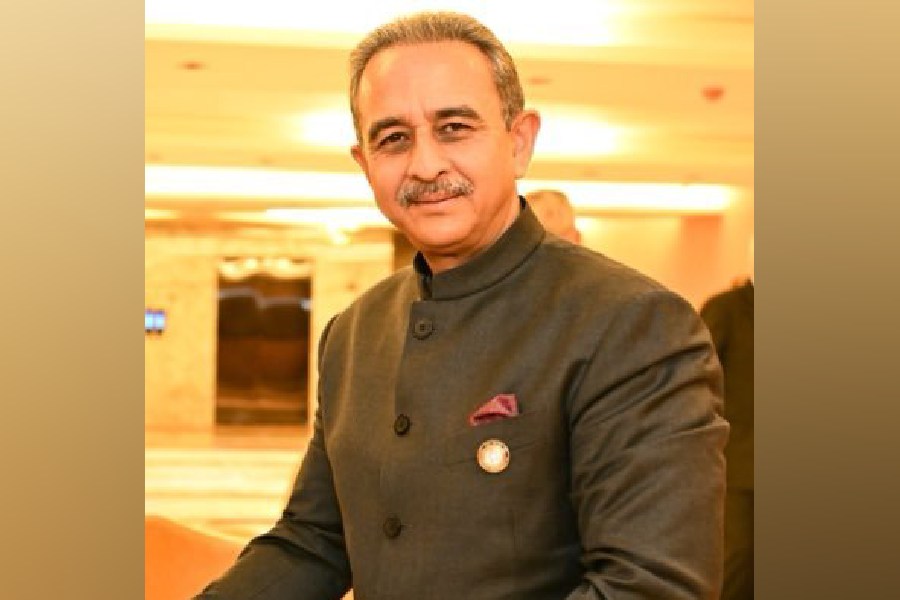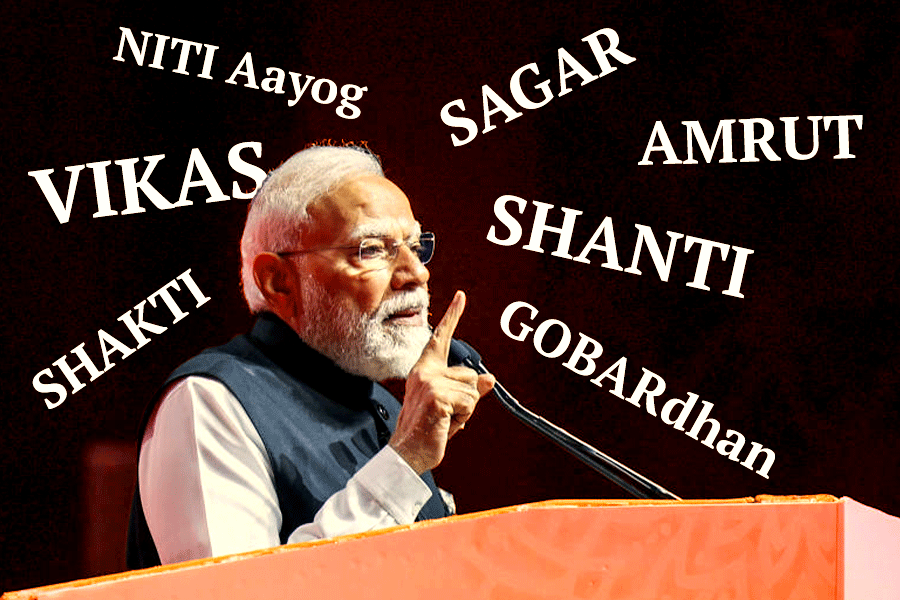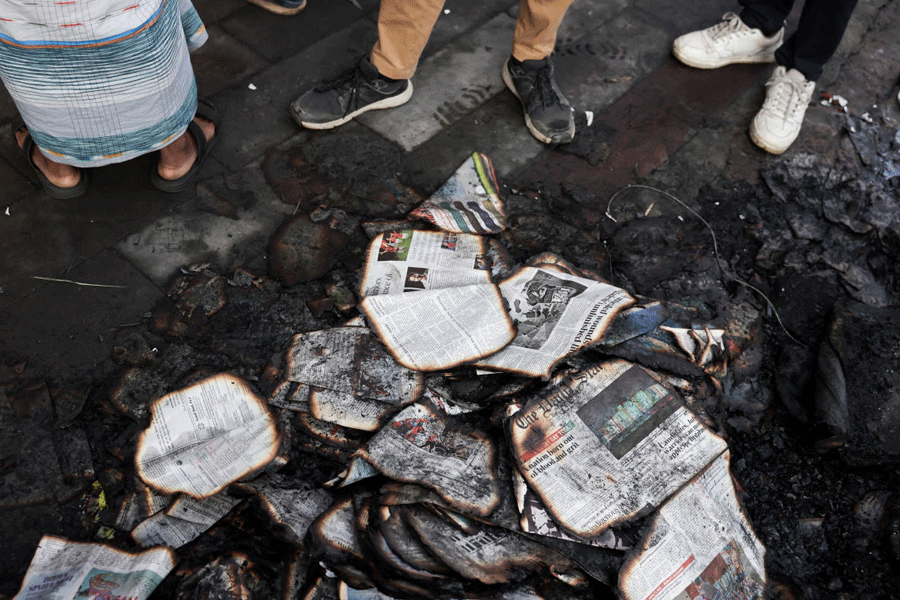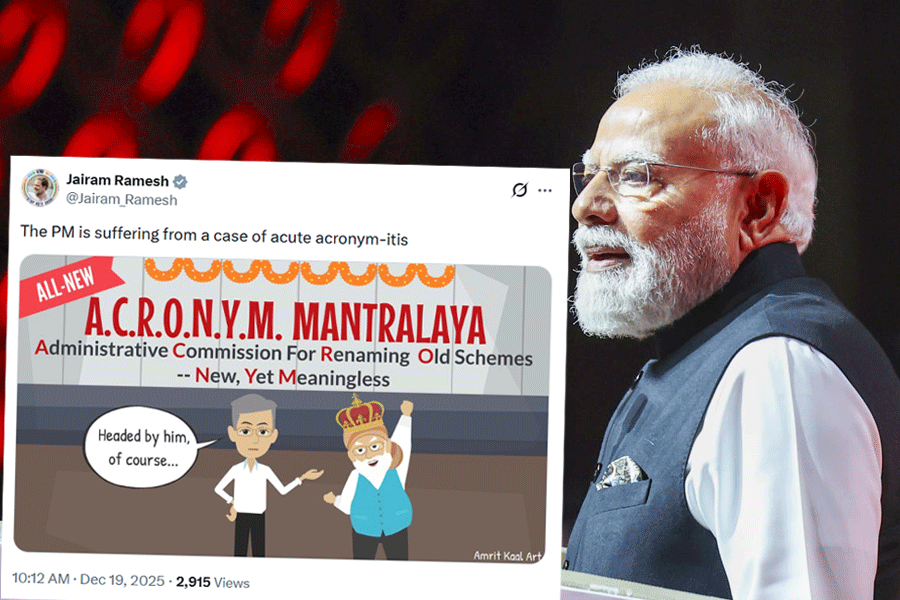 |
| Against all odds: Bidisha Sen and (below) the late Chandan Sen Photo: Subhendu Chaki |
 |
The chilly evening of February 26, 2003, had given way to a cold night. At 40-year-old housewife Bidisha Sen’s ground floor apartment in Baguiati, a grandfather clock struck midnight. She had dozed off on a sofa in the living room, after tucking her 10-year-old son into bed. Now she awoke with a start. Her husband hadn’t called. That was unusual. Dr Chandan Sen, who practised at a government hospital in Ranaghat called her every night. She tried to call him, but couldn’t get through. The phone rang away.
In the distance she could hear the night watchman’s cane strike the pavement. His shrill whistle shattered the winter silence. But the phone just refused to ring that night. And when it finally did, it was dawn? or at least the darkest moment just before it. But it was not Chandan Sen. He never called again.
Sitting on a sofa in the drawing room of her apartment on a warm, summer afternoon almost two-and-a-half years later, Bidisha recalls the night when her husband was murdered. Some of his colleagues had invited him to a party at one of their houses, given him food and drink, sent him out to wash his hands by a hyacinth pond, then sneaked up on him from behind, beat him black and blue, and strangled him to death. They dumped his body into the hyacinth pond. These details were revealed during the trial at Krishnagar district sessions court, which, on July 4, convicted five people for the murder or involvement with the murder.
The judgment has been met with jubilation at Bidisha’s apartment. Friends and family are calling up to congratulate. The media is calling up too. They want her story.
But what is her story? It does not seem to conform to the images of widowhood that the media likes to play up ? devastated countenances, dishevelled clothes, hysterical, inconsolable, broken. But no one has seen Bidisha Sen break down, not even her family. “When I saw her the day after Chandan’s death,” says Santanu Banerjee, a family friend, “she looked as serene as a statue. A doctor friend who was also there, told me, ‘Make her cry, otherwise she’ll go out of her mind.’ ” But today Banerjee agrees that her silence was not a sign of her being in shock.
It was something else. But what was it? “My first reflex was to collapse when the bad news arrived,” Bidisha smiles. “So I stood up straight. On the phone they (her parents and brother, who live in Barrackpore and were informed about Chandan’s death first) told me that he had had a massive heart attack.”
When I went to Barrackpore the next morning, there were hundreds of people there. Many of them were from Ranaghat, poor patients, whom my husband had treated. That’s when I heard the murmurs of murder. Someone said, ‘Oke ora shorieyi dilo’ (So they did get him out of the way).”
If you ask Bidisha, she’ll tell you it was this knowledge ? that a good man was wiped off the face of the earth by the forces of evil ? that made her resolve to fight for justice. “My husband wanted to wipe out corruption from the hospital. Some doctors regularly misled patients. Simple cases were made to look complicated. If one pathological test was required, they’d make patients go through hundreds of tests. They’d milk them dry. They wouldn’t even spare the poor. He wanted to stop all this.”
But she’ll also tell you, “He was my husband. And I loved him very much. Breaking down wouldn’t bring him back. I decided that in order to really express my love for him I would seek justice.”
Which is what she did. In fact, she pursued it relentlessly. “Initially, even though the post-mortem report clearly indicated foul play, little effort was being made to make arrests or file a case,” Banerjee says. “The guilty doctors attempted to pass it off as a case of drowning and the initial police reports were drawn up accordingly.”
But Bidisha wouldn’t give up. “She was dissuaded by well-wishers from pursuing it,” says Banerjee. “These people (Dr Shubharanjan Khanra and Dr Rahmat Alam), were supposed to have connections in high places. But I wasn’t afraid,” says. She wrote separate letters to the chief minister, health minister and the CID, beseeching them to look into the matter. “You are a man with a sense of poetry,” she had written to Buddhadev Bhattacharya, “I appeal to that sense of poetry to see my pain.” She was touched by his reply. “I will do everything in my power to bring justice to you,” it said.
Bidisha would make it a point to attend each hearing. “I’ve rarely seen anyone follow a case so doggedly,” says her lawyer, public prosecutor, Sadhan Monda. “I didn’t want the case to lose urgency,” she says. “If I appeared disinterested, then others would also let go.”
In fact, she had even insisted on going along for the inspection of the murder spot. “I thought I would find a clue that others couldn’t.” Though she admits to not finding anything direct, she says, shivering slightly, “I felt an incredible strength when I went there.” It was as though someone was whispering to her, “Go on, I’m with you”.
It was this strength that Bidisha passed on to Sitaram Sahani (Munna), the driver, who became a key witness to the murder. When he was going into the witness box, she told him, “Remember, speak the truth. Be fearless.”
The Mani Ratnam movie, Roja, inspired Bidisha in moments of despair. “Roja did the impossible. She freed her husband from dreaded terrorists. My husband and I had watched the film together,” she laughs, almost childishly. “I told my husband he looked like Arvind Swamy. A lot of people used to think so.”
Bidisha attributes her amazing strength to the support she received from countless people. She points out that it was not she, but the hundreds of local people gathered outside the hospital in Ranaghat, where Chandan’s body was brought, who made sure that the post-mortem was conducted in Calcutta.
She insists she’s just an ordinary girl who grew up in Calcutta. She went to Victoria College where she studied philosophy. Then her parents put an ad in the newspaper for her marriage. “There were many proposals, but Chandan and I liked each other immediately,” she says. She never thought of being anything but a housewife. Today, she works. “After Chandan’s death, the government gave me a job.” It’s an administrative job in a hospital and she doesn’t mind it.
Of course, there are moments of emptiness. And yes, she did go through all the rituals. She stopped putting vermilion on her forehead. The day after her husband died, she lathered her forearms with soap, hunched over the bathroom sink, and removed her conch shell and coral bangles. But she kept the tap water running, so no one could hear her cry.

